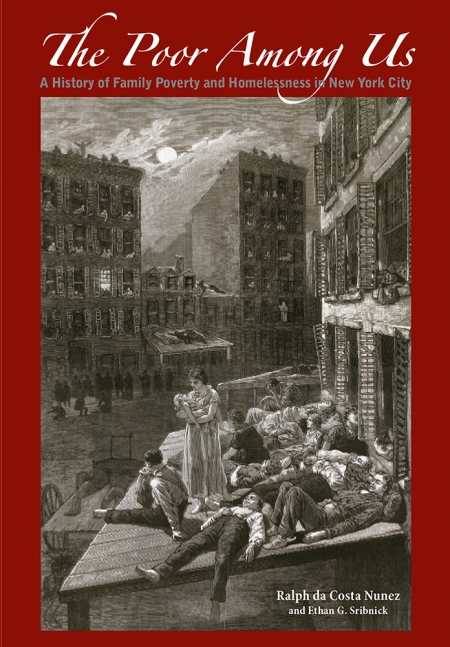The Poor Among Us
A History of Family Poverty and Homelessness in New York City
Shocking yet scholarly book paints very real portrait of NYC poverty through the centuries.
The mention of homelessness and New York City generally conjures images of men with ragged clothes clutching cups and begging for spare change. Ralph da Costa Nunez and Ethan G. Sribnick pull back the curtain on that stereotype with The Poor Among Us, a detailed and well-researched history of poverty and homelessness in New York City that focuses on not just individuals but also entire families.
Nunez and Sribnick begin with the Dutch, the first non-native inhabitants of what is now New York City, and follow with the colonials from England. The authors profile typical situations of the poor and the responses of governmental authorities to their problems. The book describes the development of New York City—and the problems of poverty along with it—through the centuries, all the way to the policies of the current era.
There’s no doubt that the authors are well studied and deeply invested in their subject matter. Nunez is president and CEO of the Institute for Children, Poverty, and Homelessness and has worked on behalf of homeless families for more than twenty-five years. He also holds a PhD in political science from Columbia University and serves there as a professor at the School of International and Public Affairs. Sribnick holds a PhD from the University of Virginia and is a senior research associate at the Institute for Children, Poverty, and Homelessness.
Nunez and Sribnick maintain a distant, scholarly tone throughout the book, such that there is no overtly liberal or conservative bias, even as they track the progression of different approaches to the problems of the poor by liberal and conservative administrations. Well-chosen photographs and maps enhance the text without overwhelming it. The authors’ impressive research provides illuminating and sometimes shocking statistics, such as this passage, based on the population in 1865: “A total of 486,000 persons, over half of the city’s population at the time, lived in 15,511 tenement houses.”
It’s a ratio that’s hard to imagine, but its impact is rivaled by other, equally incredible facts, like the square block of tenements in which 155 children under age five died in one year. The book’s academic approach is balanced by plenty of quotations and firsthand accounts by the poor themselves, or brief histories of their experiences, like that of Coco, a young woman in the early 1990s with several children who, after attempting to navigate the governmental support systems available, found herself no better off than before:
“The dirty, drug-filled, dark and dangerous building was not what Coco had in mind when she dreamed of living independently. Soon, she decided to move back into her mother’s crowded apartment, the place she had hoped to escape.”
The Poor Among Us offers an honest account of poverty and homelessness, yesterday and today.
Reviewed by
Peter Dabbene
Disclosure: This article is not an endorsement, but a review. The publisher of this book provided free copies of the book and paid a small fee to have their book reviewed by a professional reviewer. Foreword Reviews and Clarion Reviews make no guarantee that the publisher will receive a positive review. Foreword Magazine, Inc. is disclosing this in accordance with the Federal Trade Commission’s 16 CFR, Part 255.

